Mealtime Partners, Inc.
Specializing in Assistive Dining and Drinking Equipment
April 2018 Independent Eating and Drinking Newsletter

|
April Topics:
|
||
|
Mealtime Partners Home Page Send a Comment or Suggestion |
|||
| Subscribe to Newsletters |
Weight Loss: Where does the Fat Go?
The vast majority of people who are unable to eat independently do not have a weight problem. In fact, a great many of them are underweight, rather than being overweight. However, for some people, being overweight can be a problem. According to the Centers for Disease Control and Prevention (CDC), more than one third of the US population is obese. So a lot of us need to lose weight. The question is: when we lose weight, where does that weight go? In a survey of 150 doctors, dietitians, and personal trainers who were asked “where does fat go”, only 3 answered the question correctly.
In 2014, Meerman and Brown, from the University of New South Wales, Australia, published an article in the British Medical Journal titled, “When you lose weight, where does the fat go?" Meerman, later (2016) authored a book on the same subject titled: “Big Fat Myths: When you lose weight, where does the fat go?” The initial research began when he found he had lost some weight and was surprised to realize he didn’t know that answer to the question. As someone who has a physics degree, Meerman thought he should know where the fat had gone. He knew that the common belief that calories burn off as energy, or heat, was impossible. As a physicist, he understood that fat is made up of atoms and atoms cannot be turned into energy by the human body, and, therefore, that hypothesis was false. He considered that possibly the excess fat was excreted from the body in bowel movements, and flushed down the toilet, but through research that he was conducting for a book, he concluded that hypothesis was also false. His research in this area revealed that what we excrete is 75% water and the remaining material is almost entirely fibrous material that has not been broken down from foods that we ingested like vegetables, fruit and grains. The question remained: where was the fat? In this article, we will share with you some of the conclusions that he derived.
Meerman, after considerable research, found that fat turns into carbon dioxide and water in the body! He explains that humans are carbon-based and as such exhale carbon mixed with oxygen (carbon dioxide) with every breath. We breathe about 25,000 times a day and with each breath we exhale about 9 milligrams of carbon. Add that up over a year and we have exhaled more carbon than our total body weight. However, the complete explanation is that we consume food and liquid and breathe in oxygen. That food and liquid is converted in the body into carbon dioxide, water and excrement. The carbon dioxide is exhaled and the water is excreted as urine or sweat. The remaining material and liquid is passed out of the body as a bowel movement. We know that what goes into our body must come out, or, if it stays in the body, it is stored as fat and the body’s weight increases.
This does not fully explain our body’s total weight. As mentioned in the previous paragraph, we eat, drink and breathe. According to recent US government figures, Americans eat about 125-ounces of food and drink a day. Additionally, we inhale 23-ounces of oxygen each day. That is roughly 148 ounces of material that goes into our body every day. Therefore, we must have that same volume of material leave our body every day for us to maintain our weight and not gain or lose. The average resting metabolic rate (the rate at which your body burns energy when it is at complete rest) for an individual of about 165 pounds is 21-ounces of carbon dioxide per day. Seven of those ounces are exhaled while we sleep! If we breathe more, will we lose weight? Unfortunately the answer is no. The only result of more breathing, when it is unnecessary, is that we hyperventilate. However, the more we move around, the more our metabolic rate increases, and thus we exhale more carbon dioxide. In other words, we consume a certain amount of food, liquid, and oxygen, and depending upon how much we move around and use our muscles will determine how much carbon dioxide we will exhale. Therefore, the way to lose weight is to consume less, and/or move more.
This information is surprising to most people. Through his insight into this subject Meerman has clarified the process that our body goes through to intake and expel calories. However, he prefers to keep track of the kilograms that our body takes in and expels rather than calories as he feels it is a more transparent method of understanding our body’s function relating to weight.
| A Hands-Free Drinking System to Meet Everyone's Needs | |
| A hands-free drinking system
can enable everyone with the ability to create suction to drink independently throughout the day. Mealtime Partners, Inc. has several different types of hands-free drinking systems to choose from: the Hydration Backpack with Drinking Tube Positioning; the Front Mounted Drinking System; and the Drink-Partner. They can all be easily attached to a bed or wheelchair and can be positioned to meet the individual user’s need. |
|
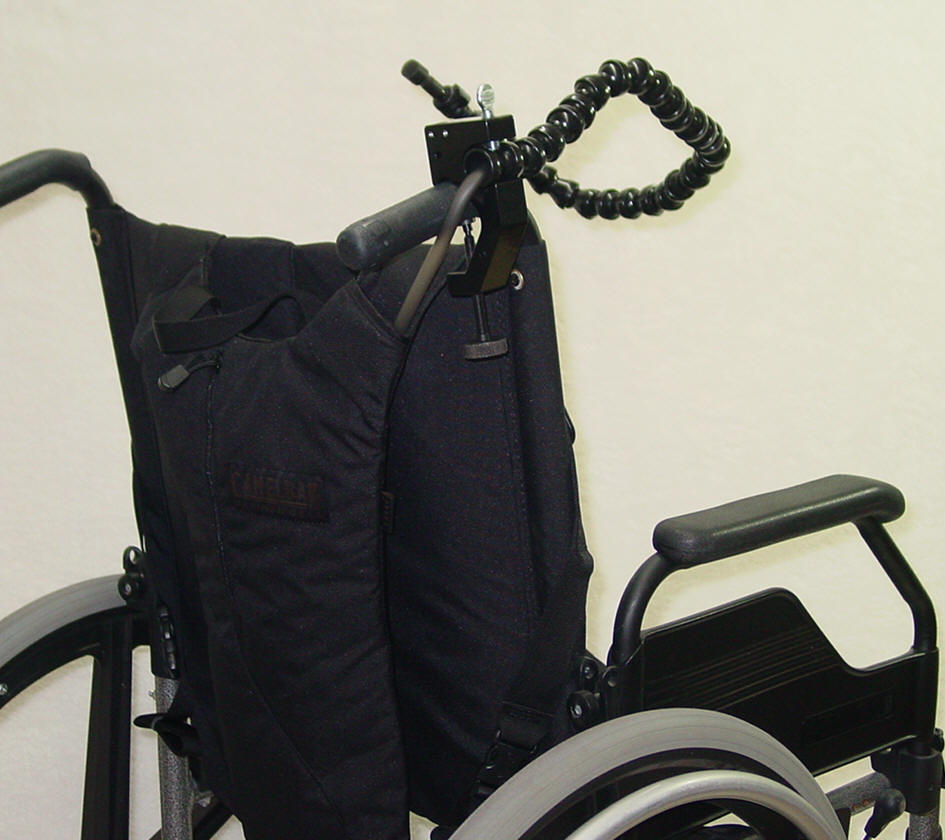 |
|
|
Hydration Backpack with Drinking Tube Positioning (i.e., for Manual Wheelchairs) |
Hydration Backpack with Drink Tube Positioning for Slide Track |
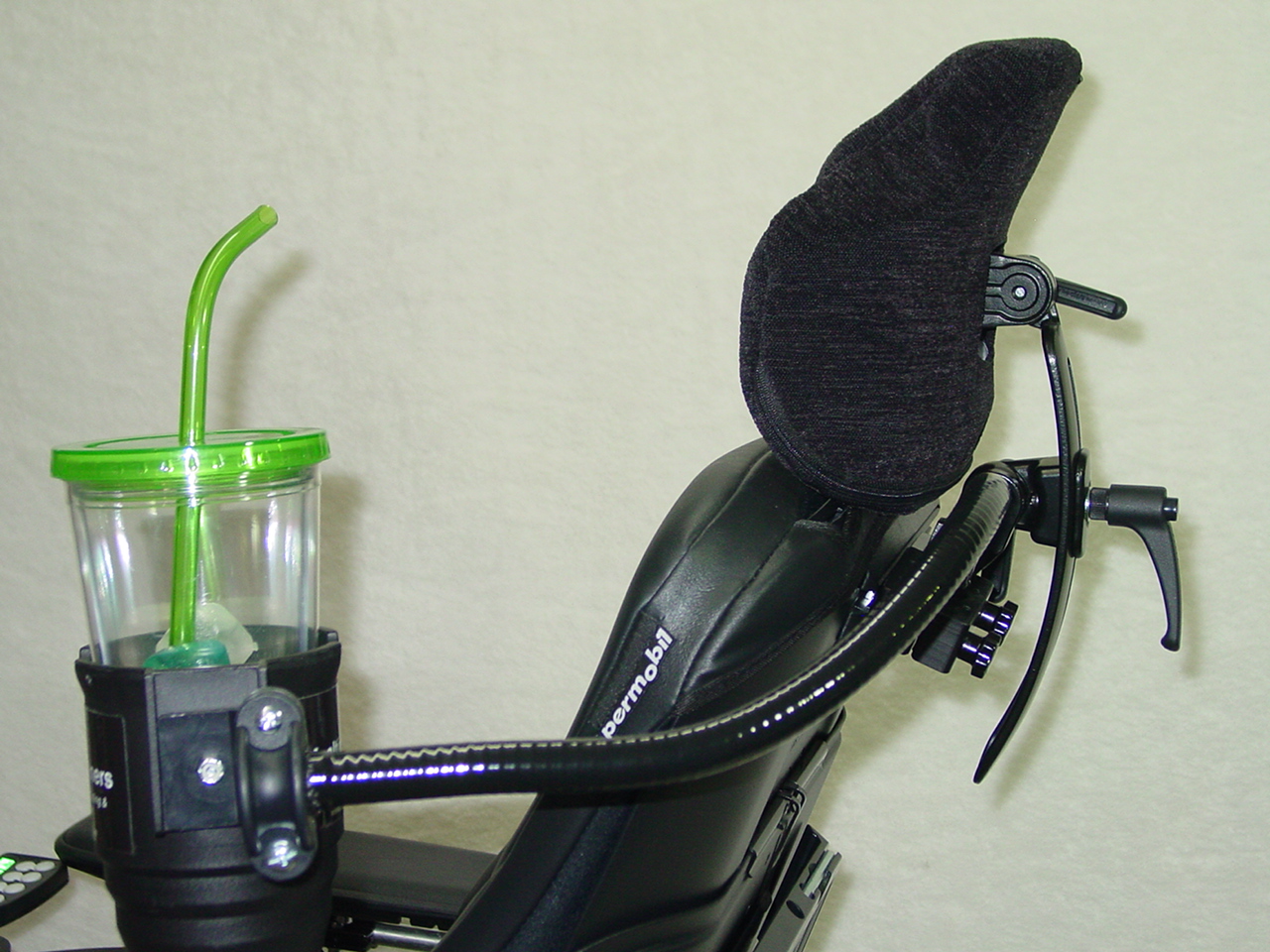 |
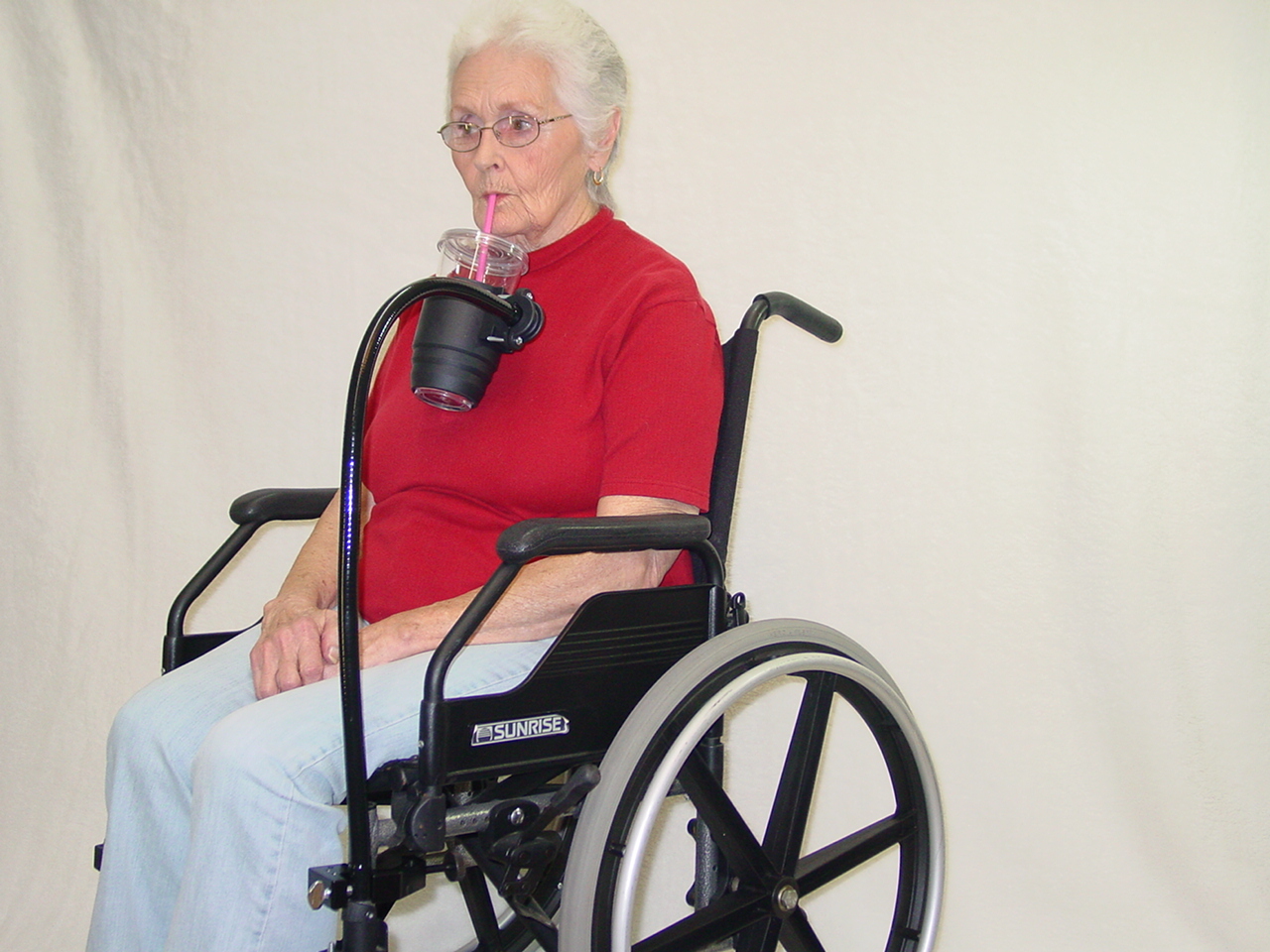 |
| Front Mounted Drinking System for Wheelchairs with Slide Track | Front Mounted Drinking System for Manual Wheelchairs |
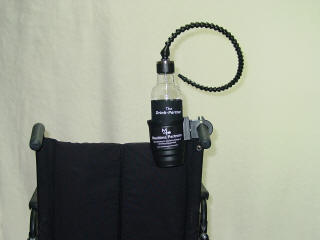 |
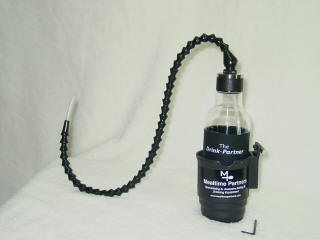 |
| Drink-Partner Mounted on a Wheelchair Handle | Drink-Partner for Slide-Track |
| To view all of the Mealtime Partners drinking products, click here. Remember Mealtime Partners drinking products can be attached to powered wheelchairs with slide-tracks, manual wheelchairs with handles and/or tubular frames, or hospital beds with plastic or metal bed rails. For additional guidance about how to select the appropriate drinking system for your specific needs, click here. | |
The Perception of Assistive Technology
In 2015, the U.S. Census Bureau estimated that there were nearly 40 million people, or 12.6% of the population of the United States, with a disability. As we age we are more likely to acquire a disability or multiple disabilities. 0.8% of infants and children under 5 years of age have a disability while 49.8% of those 75 years old, or older, are disabled. When statistics about disabilities are being collected, they are frequently divided into various categories: vision; cognition; ambulation; climbing stairs; self-care; independent living, etc. Depending upon the agency collecting the data, the various types of disabling conditions may be different.
In many instances those who have disabilities can gain and maintain independence with the help of assistive technology. Assistive technology (AT) is any item, piece of equipment, software program, or product that is used to increase, maintain, or improve the functional capabilities of persons with disabilities. The definition of assistive technology comes from the Acts relating to AT that have become laws over the past three decades: The Technology Related Assistance to Individuals with Disabilities Act of 1988 (Tech Act), and The Individuals with Disabilities Education Act (IDEA) of 2004.
For centuries, mankind has adapted “things” to help make tasks easier. Additionally, they have crafted items to facilitate getting around on a damaged or imperfect body. Prosthetics, crutches, and wheelchairs have all been used for centuries. As time has progressed, AT equipment has become more and more sophisticated, capable, and smaller. This evolution has been made possible by the rapid advancement of technology as a whole. Thirty years ago all AT equipment was, by today’s standards, “clunky”. However, since the creation of Apple computer products and the iPhone, the standard for aesthetically pleasing equipment has been raised. Now electronics including computers, phones, televisions and games are extraordinarily capable and visually pleasing.
New types of assistive technology (AT) are developed and sold regularly, yet some are well received by users and establish a place in the AT market place while others do not gain acceptance. A large part of why assistive technology becomes popular relates to what it does, and more importantly, how well it does it. However, the way a piece of equipment looks has a strong impact upon how a user feels about it and how well it is accepted.
An example of the appearance of a piece of AT not being accepted by a user is explained in the following true story. A young lady, who used both a powered wheelchair and communication device since she was a small child, was asked by her family if she would like to try a powered feeding device. She was unwilling to even consider it. She said that it would make her look different from everyone else! Even when family, friends, and her therapists discussed that her way of moving around, and talking, were different from most people, she was unable to be convinced that feeding herself, rather than being fed, was more likely to be perceived as being like everyone else. She remained unconvinced and was unwilling to even try a device.
Acquiring a new piece of AT is not necessarily a matter of just picking something out of a catalog. Many AT devices are very complex, and the user needs an assessment of their requirements and abilities to be conducted by someone who is knowledgeable about the equipment. This may be someone who works for the vendor, or a clinician who specializes in the specific type of equipment, e.g., a speech language pathologist who is an expert in the area of augmentative communication devices. Many clinicians develop a broad knowledge of how a wide range of different devices function and can provide guidance as to the functions of each device that may be of greatest value to a specific user. However, not all devices are created equal and one device may be more appropriate for the user than another. A good example of this is communication devices; even though communication devices may have similar features, one might suit a user better than another. Yet, when a user is shown several different devices they may choose one based on the way it looks rather than its functionality.
An example of this type of reaction was seen during the development of the assistive dining device when researchers asked potential users who were consulting on the project what needed to be improved on a prototype device. The only answer was, “it should be blue”! They were unable to see the functions of the equipment; they could only see how it looked.
Color is extremely important to some people while it has little to no significance for others. A young veteran who had been profoundly injured during the Iraq war had problems with urinary tract infections (UTI). His occupational therapist ordered him a drinking system that was to be mounted onto his wheelchair. When the equipment was delivered, the veteran would not allow it to be put onto his wheelchair. He would provide no explanation as to why. Later, after yet another UTI, he explained to another therapist that it would have, “messed up my wheelchair”. When a vendor spent time with him they found that he saw his wheelchair as his “Harley Davidson” and would only have cool looking stuff put on it. His wish was “to have it tricked out like the coolest motor cycle”. The vendor provided him with a drinking system that matched his wheelchair and was out of sight from the front of the chair. Once installed, the drinking system was used constantly by the gentleman and he stopped having UTIs.
|
Did You Know? Did you know that a study published in February of this year, in the Journal of Applied Environmental Microbiology, found that hot air hand-driers, found in public restrooms, blow bacteria onto hands as they are being dried? The driers suck in bacteria with the air that they then heat and blow it out to dry hands. The study concluded that if hands were held still under the hot air they would become less contaminated. However, hands that are not moved during the drying process do not become very dry and, therefore, it is not a very satisfactory way to dry your hands. Users are encouraged to rub their hands together under the flow of air to most efficiently dry them. When presented with the option of skipping hand washing after using the restroom, the conclusion was that washing hands and drying them with hot air was preferable to skipping washing. The most sanitary solution, if it is available, is to use paper towels to dry your hands. Yet many public restrooms do not offer them. The move to hot air hand-driers was made in an effort to reduce the use of paper and thus help the environment. The research did pose the option of hand driers being retrofitted with filters which would collect the bacteria and allow clean air to be blown out to dry our hands. Also, the suggestion was made that after washing and drying our hands, we use hand sanitizer to kill any bacteria that may have become attached to our hands from the dryer. |
To subscribe to the Mealtime Partners Newsletters, click here.
Mealtime Partners Website Navigation:
Home | Dining | Drinking | All Products | Ordering | Training | Calendar | FAQ | Newsletters | Contact
Please send comments and suggestions to newsletters@mealtimepartners.com
Copyright © Mealtime Partners, Inc. 2018
All rights reserved.